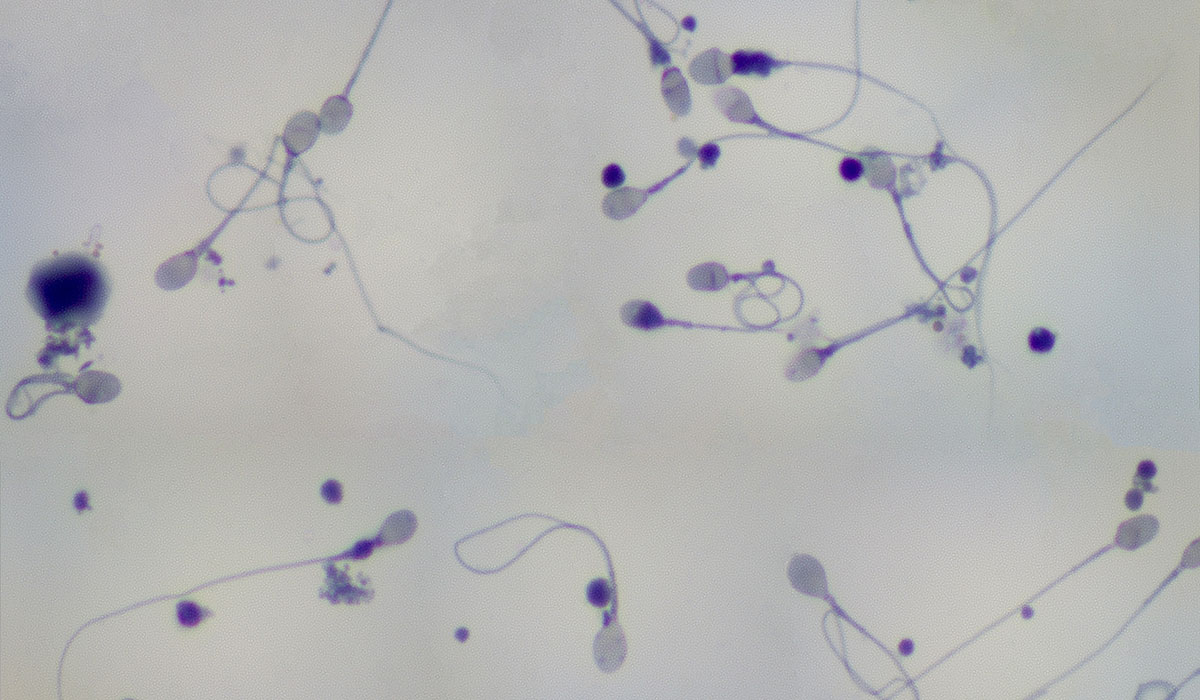MIT Offers New Insight into How Sperm Travel

Real human sperm and cell bodies photomicrograph via shutterstock
In middle school health class, you learn about sperm and how it races to the egg. But a new study by MIT and Cambridge University researchers details just how efficient sperm really are at swimming against a current, which is turns out, is upstream, like salmon.
The discovery, which will be published in the journal, eLife, may help explain how some sperm travel such long distances, through what the study says is “difficult terrain,” in order to reach and fertilize an egg. The new findings may also lead to advances in artificial insemination.
The researchers say that of the millions of sperm cells that begin the journey up the oviducts, “only a few hardy travelers will ever reach their destination. Not only do the cells have to swim in the right direction over distances that are around 1,000 times their own length, but they are exposed to different chemicals and currents along the way.”
According to the study:
While we know that sperm cells can “smell” chemicals given off by the egg once they get very close to it, this does not explain how they navigate for the majority of their journey, says Jörn Dunkel, an assistant professor of mathematics at MIT, and a member of the research team.
“We wanted to know which physical mechanisms could be responsible for navigation,” says Dunkel, who carried out the research alongside Vasily Kantsler of the Skolkovo Institute of Science and Technology and the University of Warwick (and currently visiting at MIT); Raymond E. Goldstein of Cambridge; and Martyn Blayney of the Bourn Hall Clinic in the U.K. “If you think of salmon, for example, they can swim against the stream, and the question was whether something similar could really be confirmed for human sperm cells.”
The researchers had to build a series of “artificial microchannels” of different sizes and shapes, in order to recreate how sperm would travel in the body. The researchers inserted the sperm into the microchannels and then were able to modify the flow of fluid through the tubes, to investigate how the cells responded to different current speeds.
What they discovered, according to the study, was that at certain flow speeds, the sperm cells were able to swim very efficiently upstream. “We found that if you create the right flow velocities, you can observe them swimming upstream for several minutes,” Dunkel says. “The mechanism is very robust.”
The study says that one surprising observation was that the sperm were not swimming in a straight line:
What’s more, the researchers were also surprised to observe that the sperm were not swimming in a straight line upstream, but in a spiraling motion, along the walls of the channel. The sperm cells react to the difference in the speed of current near the walls of the chamber — where the fluid is attracted to the surface, and is therefore at its slowest — and the free-flowing center of the tube, Dunkel says.
If biologists are able to observe similar fluid-flow speeds within the oviduct, it could help confirm whether sperm cells are indeed using this mechanism to navigate through the body, Dunkel says. This could one day lead to more efficient artificial-insemination techniques. Reproduction specialists could take sperm samples and artificially recreate the conditions within the body to identify the cells that are the best swimmers, in a bid to preselect those most likely to succeed, he says.
Moving forward, the researchers plan to start investigating whether sperm cells can work together to reach the egg. “It is a commonly held belief that there is competition between sperm cells, with the fittest reaching the egg first,” Dunkel says. “But recent studies by our team and others show that sperm practically always accumulate at the surface of a tube, and you can end up with a high local concentration of sperm cells, so there could actually be cooperation among these cells that allows them to swim faster collectively.”


